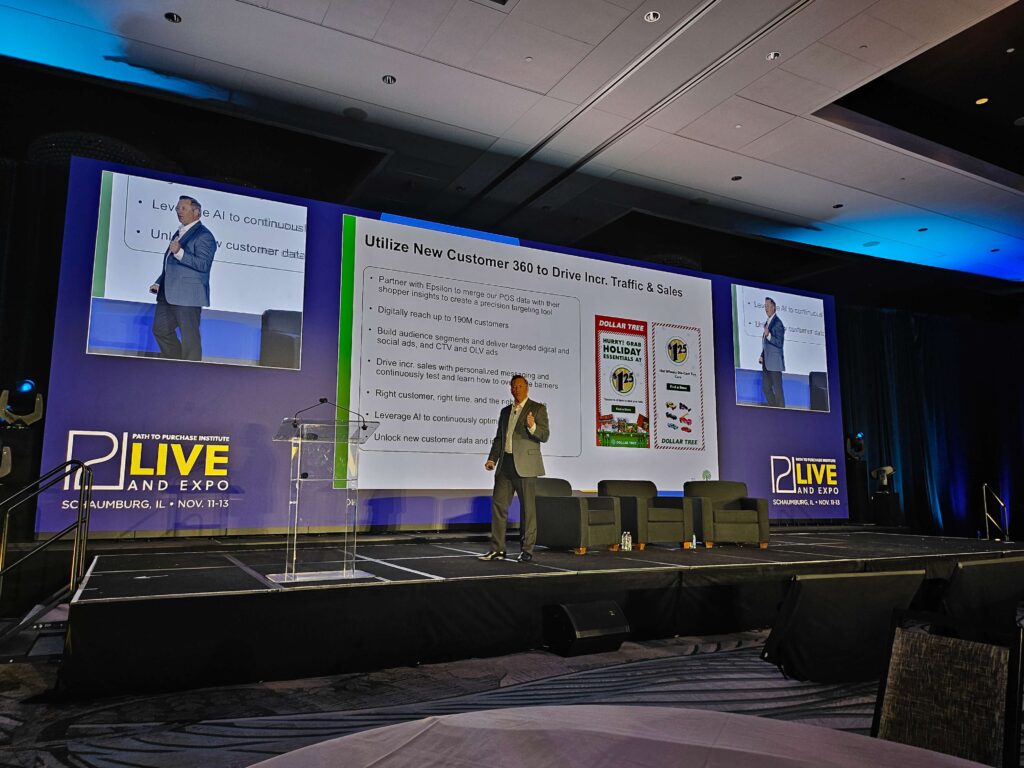Retailers and brands generally have the same end goals in sight as they work to build an effective channel for shopper engagement and conversion
By Andy Howard, Mars United Commerce
Once considered little more than a bolt-on channel with limited, niche tactics to supplement traditional marketing and let brands leverage first-party shopper data, retail media has evolved into a core strategic pillar that provides retailers with both a healthy revenue stream and an avenue for stronger collaboration.
 While still in its infancy, retail media is already starting to influence broader retail initiatives like joint business plans and merchandising agreements in many scenarios. Retailers are embedding retail media deeper into their enterprise-wide business models, recognizing the practice as a high-margin, scalable growth engine essential to their futures.
While still in its infancy, retail media is already starting to influence broader retail initiatives like joint business plans and merchandising agreements in many scenarios. Retailers are embedding retail media deeper into their enterprise-wide business models, recognizing the practice as a high-margin, scalable growth engine essential to their futures.
As a leading practitioner in the retail media ecosystem, Mars United has been watching intently (and sometimes helping) as networks focus their strategic priorities into three key areas aimed at strengthening their value propositions and earning incremental investments from brand partners:
1. Proving performance through enhanced measurement: Networks are going beyond the closed-loop reporting criteria that might satisfy the brand’s media team to deliver more robust, transparent metrics that can win over the broader organization by demonstrating clear business impact and validating media effectiveness across the full funnel.
2. Improving operational efficiency with self-service platforms and artificial intelligence tools: There’s a strong focus across many networks to streamline workflows for advertisers by enabling hands-on access through self-service tools, reporting dashboards, and automated processes. These offerings help reduce friction, lower operating costs, improve speed to market — and deliver stronger results. They ultimately will transform retail media beyond where it sits today.
3. Expanding reach and improving capabilities across channels: Retail media has evolved from a digital-only play to an omnichannel medium, with investments moving into stores and other physical touchpoints. Digital screens, integrated mobile experiences, enhanced audio systems and new innovations like Instacart’s Caper Carts are blending ecommerce with in-store shopping to deliver a seamless, interactive shopper journey. That’s positioning retail media as one of the most powerful advertising platforms in terms of both scale and full-funnel engagement.
Brand Priorities
 It’s important to note that all three of these strategic retailer priorities were motivated largely by brand and agency partners, who have been vocal (if not vociferous) about their need for better measurement practices, more direct control of campaign management, and access to the vast-and-untapped in-store audience for some time.
It’s important to note that all three of these strategic retailer priorities were motivated largely by brand and agency partners, who have been vocal (if not vociferous) about their need for better measurement practices, more direct control of campaign management, and access to the vast-and-untapped in-store audience for some time.
Brand organizations are aligning more deeply with retail media as a key lever for growth because they believe in its power. That conviction has them leaning into three consistent strategic priorities of their own:
1. Increased investment and integration: Brands are committing significant resources to retail media and developing a more strategic, enterprise-wide understanding of how to leverage the channel to drive incremental growth. No longer viewed as a stand-alone practice, it’s becoming a more integral piece of the broader marketing strategy.
2. Growing demand for transparency: Brands are pushing networks to provide stronger, more transparent measurement and reporting. They’re setting clearer expectations around performance metrics that address their own KPIs and are far less tolerant of networks that can’t deliver this level of visibility. Actionable insights and transparent data are now table stakes for future investment.
3. Targeting and personalization: Brands are looking for networks that are ready to partner on more advanced audience targeting strategies, including customized segmentation, cleanroom data sharing, and alignment against brand objectives. As the network landscape continues to grow and mature, brands want to move beyond experimentation to reach accountability, and are therefore making smarter, more informed choices about where and how to invest across retail media networks.
Finding the Way Forward
Retail media continues to face some significant challenges as networks look for ways to sustain current growth levels over the long term.
The most critical challenge is probably standardization. The industry needs consistent, transparent methods for measuring and evaluating performance across networks to enable better cross-platform comparison and planning. This is crucial for future growth because brands need it to make those informed investment decisions.
Another key challenge is performance itself. Brands are looking for stronger results driven by smarter audience targeting, more efficient operations, and improved attribution models that clearly tie media investment to true business outcomes rather than just media exposure.
Brands also are yearning to build complete, enterprise-wide strategies where retail media is fully aligned with the total business plan rather than the fragmented process we still see too often at many retailers.
Finally, market saturation is leading to fragmentation and complexity in the space. With so many retailers launching networks, the competition for what remains limited brand dollars is intensifying. We anticipate some level of consolidation to take place, as retailers and partners align to deliver more scalable and differentiated solutions.
About the Author
 Andy Howard is Senior Director of Commerce Media at Mars United Commerce, where he develops media strategies for leading brands across national and regional retailers in numerous channels. He has over two decades of experience in shopper marketing and commerce media, helping brands develop strategies and practices to win with both shoppers and retailers. Andy has a passion for empowering brands with innovative thinking, inspiring holistic planning with retailers and pushing the limits of measurement. He also leads development and production of Mars United’s flagship U.S. Retail Media Report Card.
Andy Howard is Senior Director of Commerce Media at Mars United Commerce, where he develops media strategies for leading brands across national and regional retailers in numerous channels. He has over two decades of experience in shopper marketing and commerce media, helping brands develop strategies and practices to win with both shoppers and retailers. Andy has a passion for empowering brands with innovative thinking, inspiring holistic planning with retailers and pushing the limits of measurement. He also leads development and production of Mars United’s flagship U.S. Retail Media Report Card.



